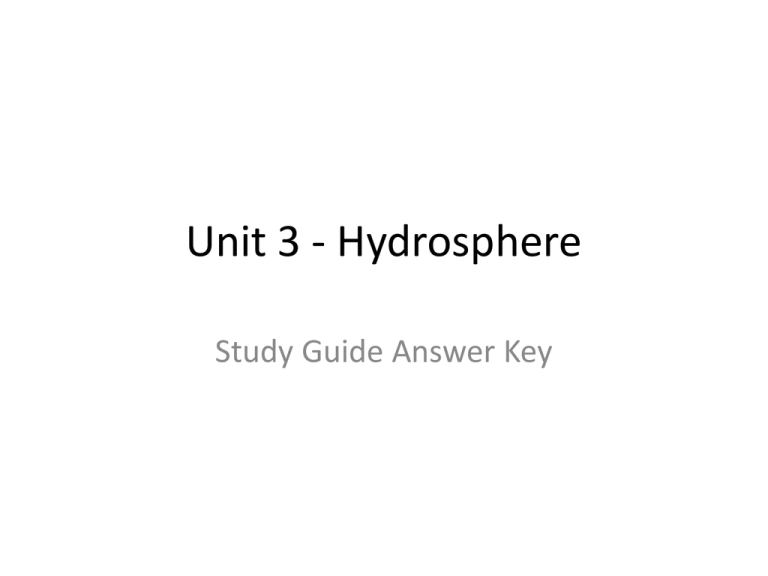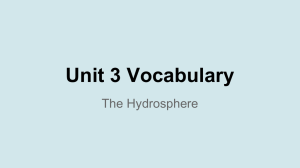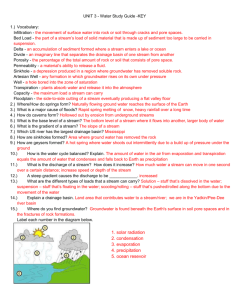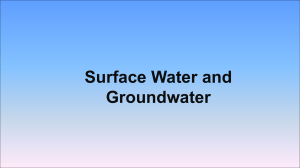Unit 3 - Hydrosphere Study Guide Answer Key
advertisement

Unit 3 - Hydrosphere Study Guide Answer Key 1a) Infiltration - the movement of surface water into rock or soil through cracks and pore spaces 1b) Bed Load - the part of a stream’s load of solid material that is made up of sediment too large to be carried in suspension 1c) Delta - an accumulation of sediment formed where a stream enters a lake or ocean 1d) Divide - an imaginary line that separates the drainage basin of one stream from another 1e) Porosity - the percentage of the total amount of rock or soil that consists of pore space 1f) Permeability - a material’s ability to release a fluid 1g) Sinkhole - a depression produced in a region where groundwater has removed soluble rock 1h) Artesian Well - any formation in which groundwater rises on its own under pressure 1i) Well - a hole bored into the zone of saturation 1j) Transpiration - plants absorb water and release it into the atmosphere 1k) Capacity - the maximum load a stream can carry 1l) Floodplain - the side-to-side cutting of a stream eventually producing a flat valley floor 2) Where/How do springs form? A natural flow of groundwater where the water reaches the surface of the Earth 3) What is a major cause of floods? Rapid spring snow melts 4) How do caverns form? Caused by erosion from streams 5) What is the base level of a stream? The lowest point that a stream can erode its channel 6) What is the gradient of a stream? The slope or steepness of a stream channel 7) Which US river has the largest drainage basin? Mississippi River 8) How are sinkholes formed? A region where groundwater has removed the rock 9) How are geysers formed? When groundwater enters underground features or caverns in hot igneous rock and heated to boiling temperatures 10) How is the water cycle balanced? Explain. The average annual precipitation equals the amount of water that evaporates 11)What is the discharge of a stream? How does it increase? the volume of water flowing past a certain point in a given unit of time -- increases between the source and its mouth (end) 12) A steep gradient causes the discharge to be _large___________. 13) What are the different types of loads that a stream can carry? Solution – dissolved Suspended - floating Bed Load - rolling/scooting along the bottom 14) Explain a drainage basin. The land area that contributes water to a stream/river 15) Where do you find groundwater? Zone of Saturation 1 – Sun (power behind the water cycle) 2 – Condensation 3 – Evaporation 4 – Precipitation 5 – Collection



